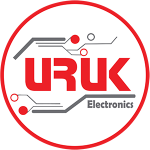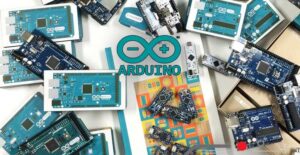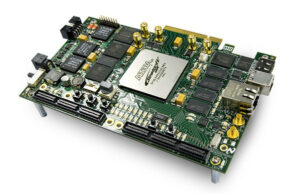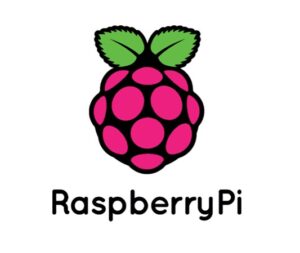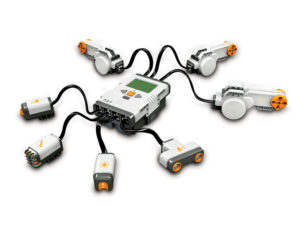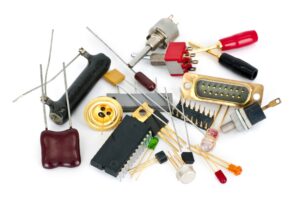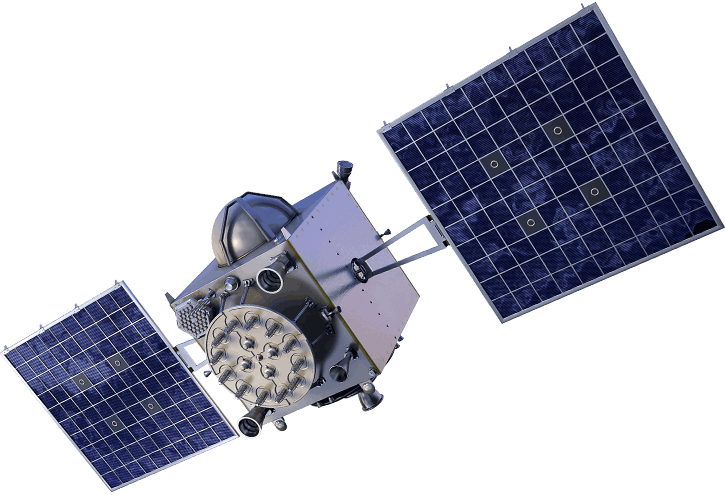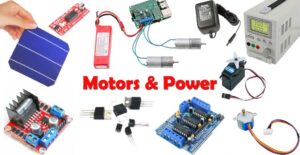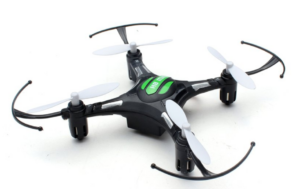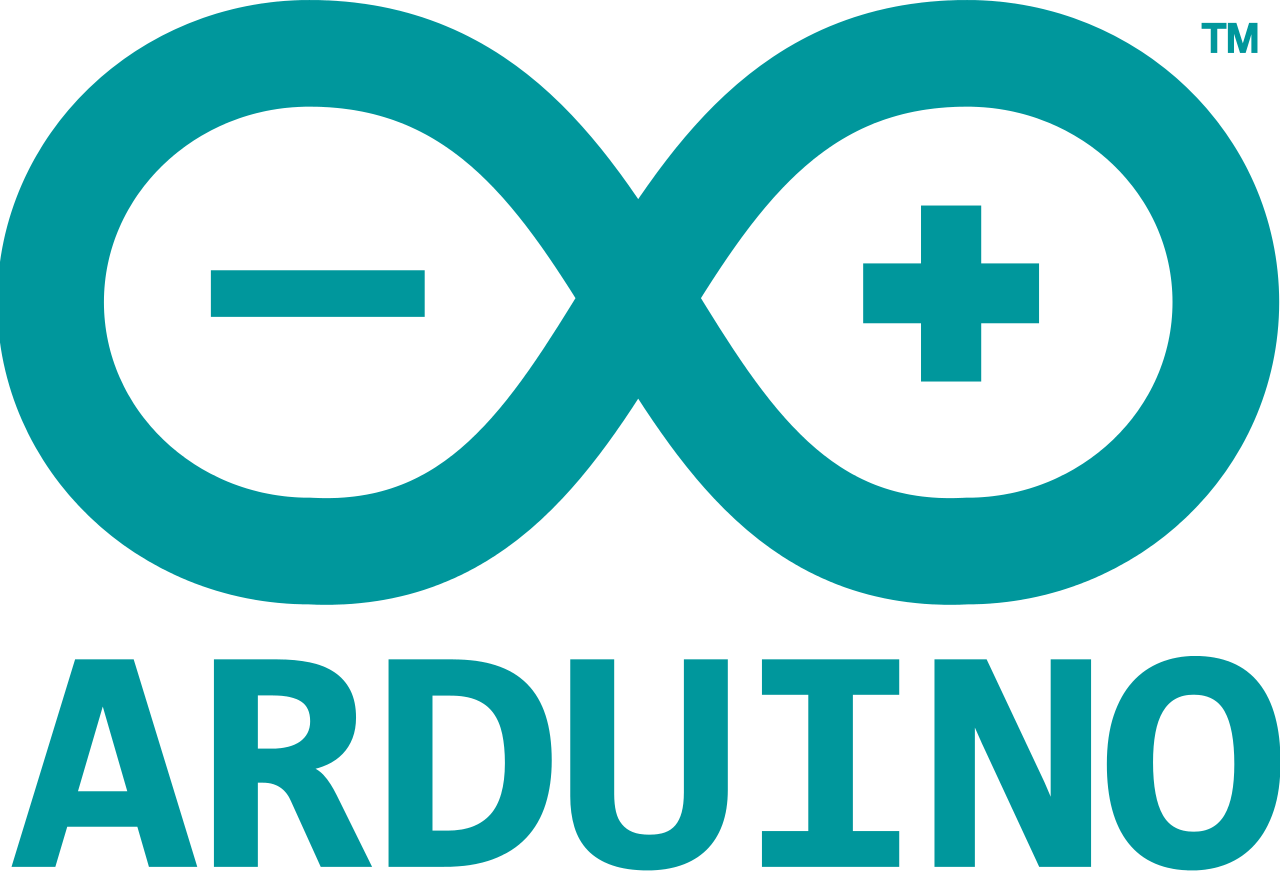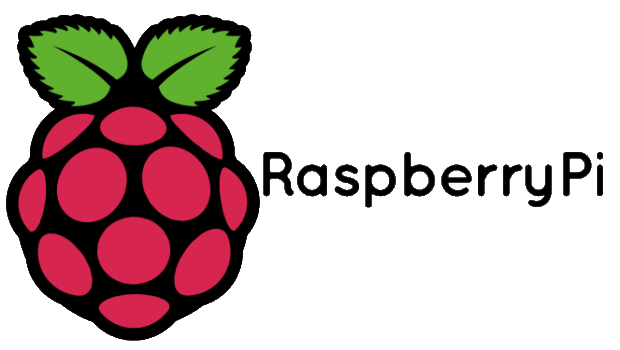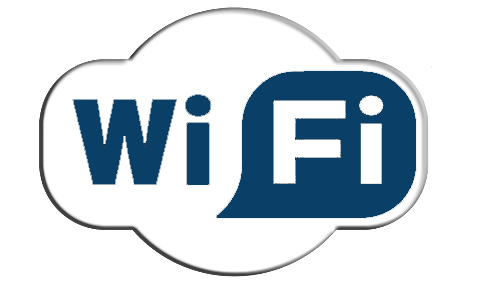No products in the cart.
ESC “Electronic Speed Controller” Leave a comment
ESC works like the gearbox of the vehicle. In the vehicle, the gearbox suggests the wheel rotate at its decided speed. Similarly, in the drone system, ESC determines the speed of the brushless motor. In this article, we will cover the basic concept of ESC, its function and the parameters to be considered while choosing it for your drone.
تعمل متحكمات السرعة الالكترونية بصورة مماثلة لعمل علبة التروس في السيارات. في السيارات تكون علبة التروس مسؤولة عن دوران العجلات بالسرع المطلوبة. تعمل متحكمات السرع الالكترونية في الطائرات بدون طيار على تحديد سرع المحركات بدون فرش. هذه المقالة تغطي المبدأ الرئيسي لمتحكمات السرع الالكترونية, وظائفها والعوامل التي يجب اخذها بنظر الاعتبار عند اختيار المتحكم المناسب لتصميم طائرة بدون طيار.
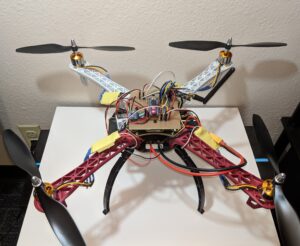
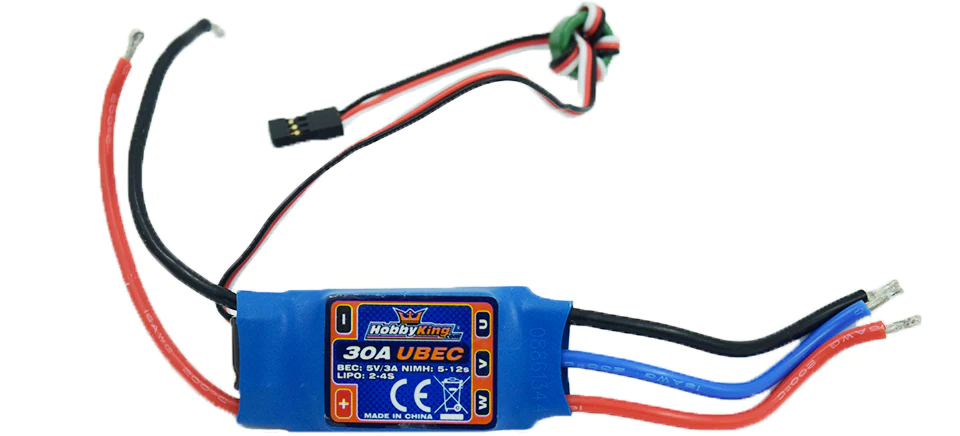
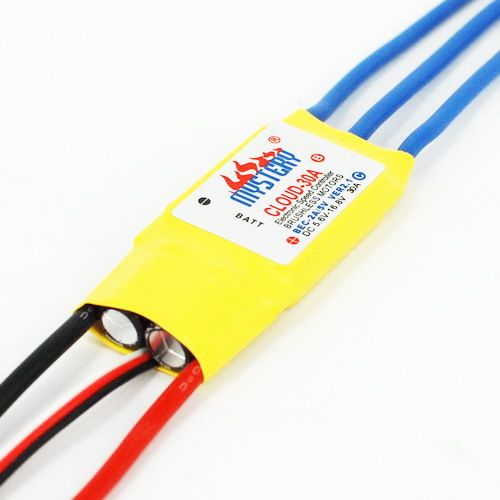
What is an ESC?
ESC is an Electronic speed controller that receives the throttle signals from the flight controller and runs the brushless motor at its desired speed.
The good quality ESC gives a reliable and smooth flight experience. There are a number of factors that are considered while selecting the ESC and they are as follows,
- Current Rating
- Input Voltage Rating
- Weight and Size
- ESC Firmware
- BEC
- Connection of ESC
- ESC processors
- ESC Protocols
اختيار المتحكم المناسب وذو الجودة العالية يزيد من امكانية الحصول على تجربة طيران مثالية وسلسة.
هناك عدة عوامل يجب اخذها بنظر الاعتبار عند اختبار المتحكم المناسب, هذه العوامل هي:
- تدفق التيار
- فرق جهد الادخال
- الوزن والحجم
- Firmware
- BEC.
- المعالجات
- البروتوكولات
Current Rating
The first thing to consider when selecting an ESC is the current rating or ampere rating. Motors draw current when they spin, if you draw more current than your ESC capacity then it will start to overheat and eventually damage. You should decide on the current rating of the ESC after selecting a suitable motor size for your requirements.
Mostly, three things can increase the current draw of your ESC,
- High KV ratings of the motor
- Larger propellers (length & pitch)
- Larger motor size (stator width & height)
There are 2 current ratings of ESC and they are continuous and burst. The continuous current rating indicates the maximum continuous current that ESC can handle safely. The burst rating means the maximum current that the ESC can handle for a short period of time (e.g., 10 seconds) without damaging the ESC itself.
تدفق التيار
أول شيء يجب مراعاته عند اختيار المتحكم المناسب هو معدل تدفق التيار. تسحب المحركات تيارًا عندما تدور، إذا قمت بسحب تيار أكثر من سعة المتحكم فسوف تبدأ في حرارة المتحكم بالارتفاع والتلف في النهاية. يكون اختيار المتحكم على ضوء اختيار حجم المحرك المناسب لمتطلبات بناء الطائرة بدون طيار.هناك ثلاثة أشياء يمكن أن تزيد من تدفق التيار:
- ارتفاع معدلات كيلو فولت للمحرك
- مراوح أكبر (الطول ودرجة الميل)
- حجم محرك أكبر (عرض وارتفاع الجزء الثابت)
يوجد تصنيفان حاليان للمتحكمات وهما:
- مستمر: يشير تصنيف التيار المستمر إلى الحد الأقصى للتيار المستمر الذي يمكن لـ لمتحكم التعامل معه بأمان.
- متفجر: يعني تصنيف الاندفاع الحد الأقصى للتيار الذي يمكن للمتحكم التعامل معه لفترة قصيرة من الوقت (على سبيل المثال، 10 ثوانٍ) دون الإضرار بالمتحكم.
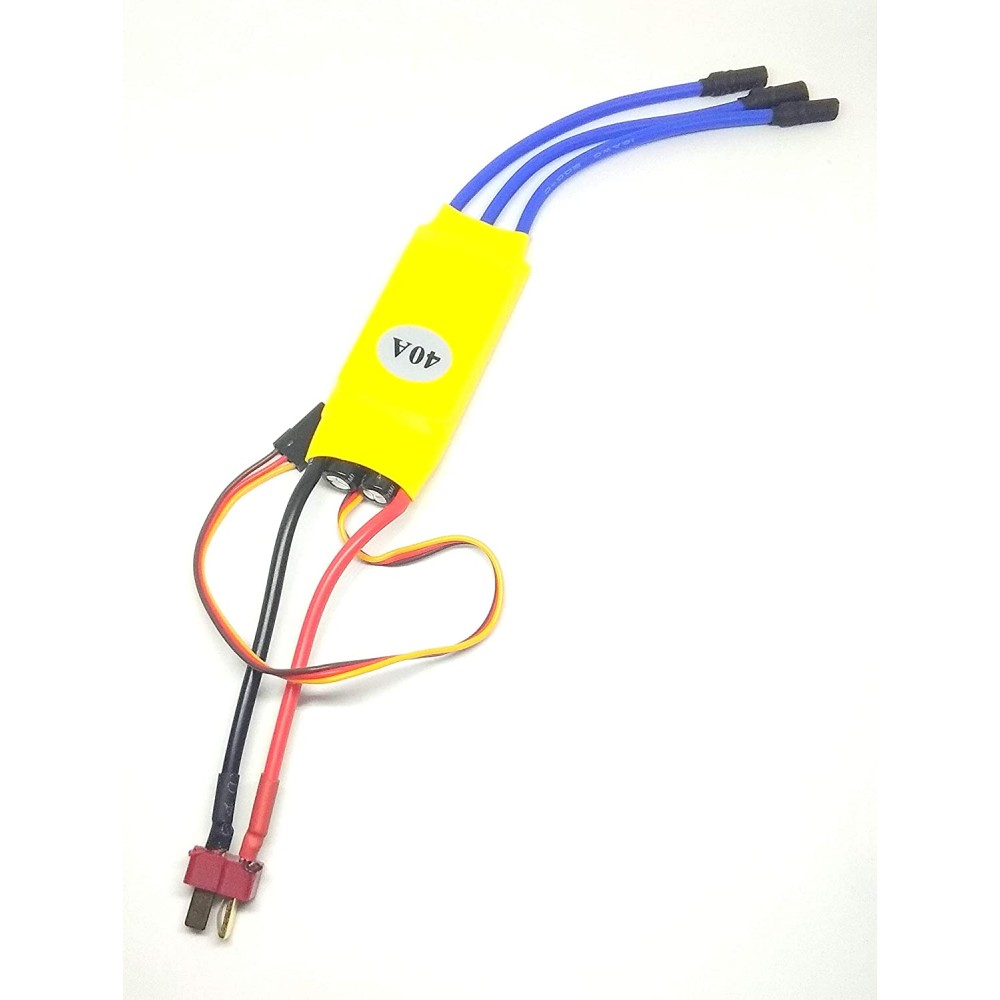
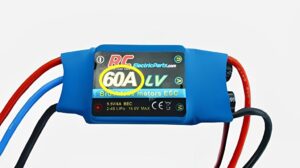
Input Voltage Rating
The voltage rating of an ESC is the maximum amount of voltage that your ESC can handle safely. Some of the ESCs support 3S-4S battery voltage, while others can support 6S battery voltage. Here, make sure that they are compatible with the LiPo battery voltage. Powering your ESC with excessively high voltage will damage your ESC as well as the motor.
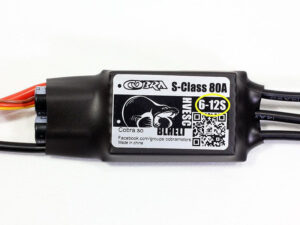
فرق جهد الادخال
فرق جهد الادخال للمتحكم هو أقصى قدر من الجهد الذي يمكن أن يتعامل معه المتحكم بدون التعرض للتلف.
تدعم بعض المتحكمات جهدد البطارية 3S و 4S، بينما يمكن لأنواع اخرى دعم جهد البطارية 6S .
يجب التأكد من أن جهد ادخال المتحكم متوافق مع جهد البطارية.
يؤدي تشغيل المتحكم بجهد عالي جدًا إلى إتلافه وكذلك اتلاف المحرك
Weight and Size
The weight and size of an ESC are dependent on the ESC’s current rating. It is challenging to make ESCs with lighter and smaller sizes without losing their performance and effective cooling. Mostly, single standalone ESCs are designed with a weight of around 4 grams to 6 grams, and the 4 1ESC weighs around 12 grams to 15 grams. Generally, the lighter ESCs have lower heat dissipation, which leads to concerns of overheating.
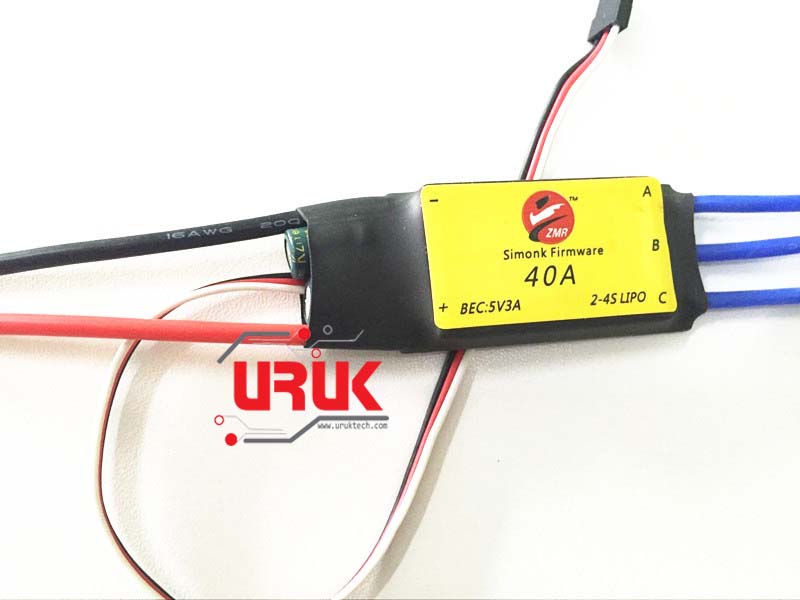
الوزن والحجم
يعتمد وزن وحجم المتحكم على معدل تدفق التيار لهذا المتحكم. من الصعب صنع متحكمات بأحجام أخف وأصغر دون فقدان أدائها وتبريدها الفعال. في الغالب، يتم تصميم المتحكمات الفردية بوزن حوالي 4 جرام إلى 6 جرام.
يزن المتحكم المتعدد حوالي 12 جرامًا إلى 15 جرامًا. بشكل عام، تتمتع المتحكمات الكهربائية والإلكترونية الأخف بتبديد أقل للحرارة، مما يؤدي إلى مخاوف من ارتفاع درجة الحرارة.
ESC Firmware
ESC firmware is the software that is running on each ESC. It determines the performance of ESC. The ESC firmware gives information about its supported protocols and configuration interface. There are different types of ESC firmware are available,
- BLHeli ESC.
- BLHeli_S ESC
- SimonK ESC
- KISS firmware
- BLHeli_32
Out of these, BLheli firmware and Simonk firmware are open sources and KISS firmware is closed source means it can run with only KISS ESC.
تعمل متحكمات السرعة الالكترونية عن طريق برنامج رئيسي توفر للمتحكم معلومات عن البروتوكولات المدعومة واعدادات الربط.
هناك عدة انواع من البرامج منها مفتوحة المصدر ومنها مغلقة المصدر.
- BLHeli ESC
- BLHeli_S ESC
- SimonK ESC
- KISS firmware
- BLHeli_32
BEC
BEC stands for Battery Elimination Circuit. The BEC provides the constant current at a specific voltage. It has a 5V output for powering the flight controller, a radio receiver (RX), and other 5V components. But nowadays, in the quadcopter system, the power distribution board is used so we really don’t need ESCs with BEC.
The ESC without BES is known as OptoESC. Without the 5V BEC, your Flight controller and RX will require a separate power source. As per the above image, an OptpESC doesn’t have the “red” servo wire. It uses only the signal and ground wire.
تحتوي المتحكمات على دوائر متخصصة لتغذية الاجزاء المختلفة من المنصة بجهد وتيار ثابتين. يمكن استخدام هذه الخاصية لتوفير جهد مستقر بتيار مستقر لمتحكم الطيران واجهزة الارسال والاجهزة الاخرى الي تحتاج الى فرق جهد مستمر.
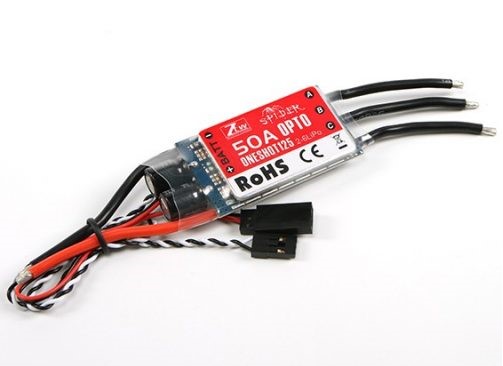


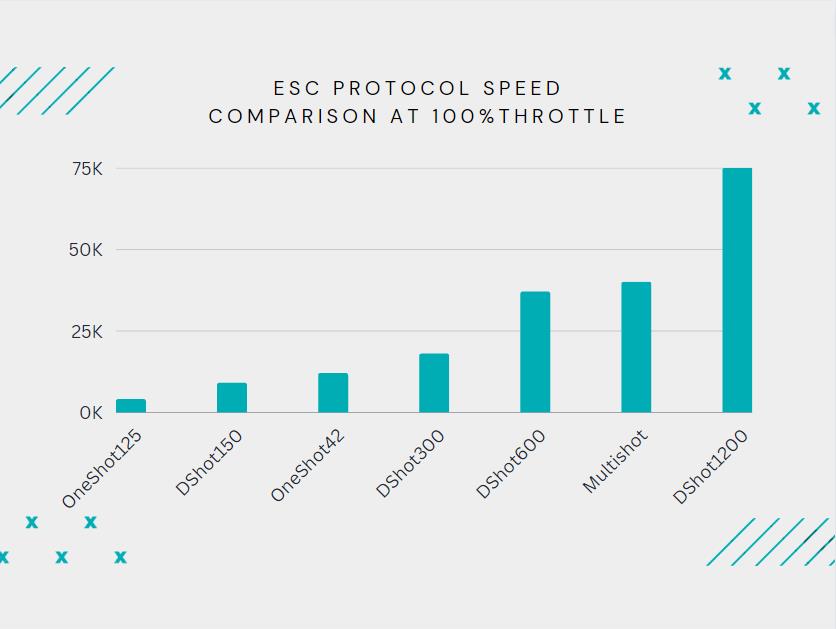
Connection of ESC with Motor
ESC uses a LiPo battery to power up. The signal received from the flight controller controls the speed of the motor. A Brushless ESC has 3 wires which directly plug or get soldered to the 3 wires of the motor. The below image shows the single standalone ESC with LIPO battery, RC receiver, and brushless motor.
ربط متحكم السرعة الالكتروني
يستعمل المتحكم بطارية LiPo كمصدر للطاقة حيث يكون الربط كما موضح في الصورة المرفقة
يربط المتحكم بمتحكم الطيران والبطارية من جهة وبالمحرك بدون فرش من جهة ثانيه.
ESC Protocols
Protocols are like the operating system of ESC. They determine how fast communication happens between the ESC and FC (flight controller) which plays a major role in the handling and performance of a quadcopter.
Here is a list of current protocols used on quadcopters, from oldest to latest:
- Standard PWM
- Oneshot125
- Oneshot42
- Multishot
- DShot
- ProShot
البروتوكولات
تشبه البروتوكولات نظام التشغيل وهي تحدد مدى سرعة الاتصال بين متحكم السرعة الالكتروني ومتحكم الطيران التي تلعب دورًا رئيسيًا في التعامل مع وأداء الطائرة بدون طيار.
فيما يلي قائمة بالبروتوكولات الحالية المستخدمة في الطائرات بدون طيار من الأقدم إلى الأحدث:
- Standard PWM
- Oneshot125
- Oneshot42
- Multishot
- Dshot
- ProShot
ESC Processors
Most ESC uses the processor from ATMEL, Silabs, and ARM Cortex. All these processors have different, features, and specifications and support different firmware.
- ATMEL 8-bit is compatible with both SimonK and BLHeli firmware
- SILABS 8-bit is compatible with BLHeli or BLHeli_S only
- ARM Cortex 32-bit (e.g. STM32 F0, F3, L4) can run with BLHeli_3
المعالجات
انواع متعددة من المتحكمات تستخدم في صناعة وتكوين المتحكمات الالكترونية بالسرعة.
لكل نوع من انواع المتحكمات خصائص ومواصفات تختلف عن المتحكمات الاخرى بالاضافة الى الاختلاف في البرنامج الذي يدعم عمل هذا المتحكم.
- ATMEL 8-bit يدعم برنامجي SimonK و BLHeli
- SILABS 8-bit يدعم فقط برامج BLHeli او BLHeli_S
- ARM Cortex 32-bit (STM32) يدعم BLHeli_3
